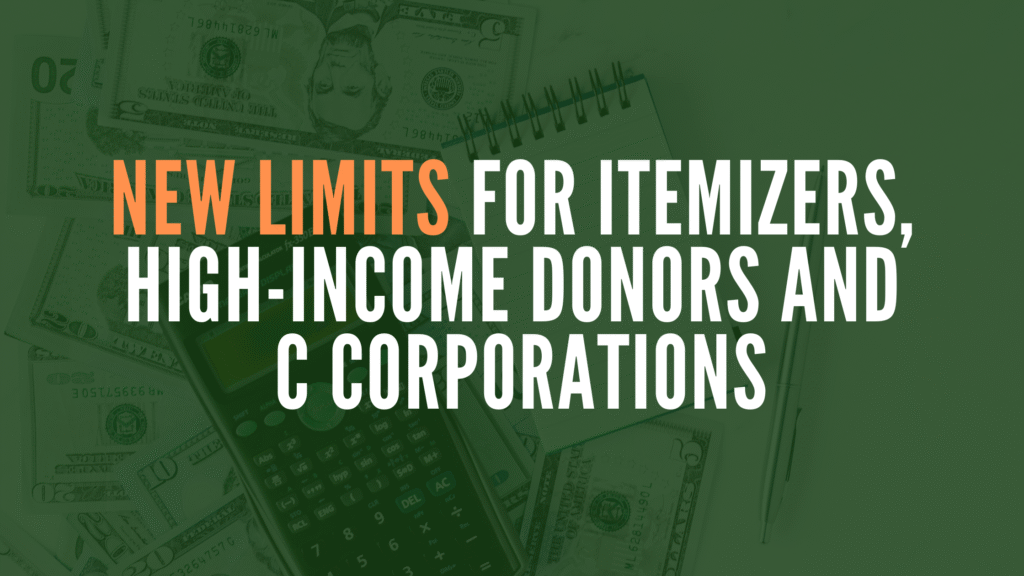Unfortunately, not all of the news under the OBBBA is positive. While non-itemizers will celebrate new opportunities to deduct their contributions, those who itemize deductions, make substantial charitable gifts, or represent corporations with significant philanthropic budgets will encounter new limitations beginning in 2026.
At the heart of these changes is a new “floor” requirement for deductibility. In simple terms, taxpayers will only be able to deduct charitable contributions to the extent they exceed 0.5% of their adjusted gross income (AGI).
How the New Floor Works for Individuals
Let’s break this down with a few practical examples:
- Example 1: If your AGI is $200,000 and you donate $10,000, the first $1,000 (0.5% of AGI) does not count toward your deduction. Instead of claiming a $10,000 deduction, you can only deduct $9,000. That’s a $1,000 loss compared to today’s rules.
- Example 2: If your AGI is $500,000 and you donate $50,000, the first $2,500 is disallowed. You’ll only be able to deduct $47,500.
At first glance, these reductions might not appear dramatic. However, for high-income individuals who give generously, tens of thousands, hundreds of thousands, or even millions, the losses compound quickly.
For example, a donor with an AGI of $5 million who contributes $500,000 in a single year would lose the deduction on the first $25,000 of that contribution. That’s $25,000 of generosity with no tax recognition at all.
No Carryforward of Disallowed Amounts
One of the most important and painful details is that the disallowed portion cannot be carried forward. If you lose it in the year of donation, it’s gone for good. The only exception comes into play if your contributions exceed other statutory limits, such as the long-standing 60% AGI cap for cash donations.
This rule creates a new incentive for high-income taxpayers to carefully plan the timing and amount of their contributions, since a portion of every gift will be excluded under the new system.
Impact on C Corporations
C corporations will also face a new layer of complexity. Starting in 2026:
- Contributions will only be deductible to the extent they exceed 1% of taxable income.
- Any portion below that threshold is disallowed outright.
- However, corporations will have a small advantage compared to individuals: if their total contributions exceed 10% of taxable income, they may carry forward the disallowed portion for up to five years.
Even with that limited carryforward option, this change represents a significant shift. Many corporations particularly those with strong community engagement programs or established philanthropic traditions could see the tax benefits of their generosity shrink considerably.
For businesses that regularly make large, visible gifts for example, funding hospital wings, university programs, or nationwide charitable campaigns, this new rule will require rethinking how contributions are structured. Some may need to adjust the timing of gifts, splitting them across multiple years, while others may need to reconsider the form of their giving (for example, shifting from cash to in-kind support or sponsorships).
The Bigger Picture
In short, while the OBBBA opens new doors for small and mid-level donors, it simultaneously places new ceilings and floors on higher-income households and corporations. The intent appears to be twofold: broaden the base of charitable participation while curbing the outsized tax benefits historically enjoyed by wealthier donors.
For those in higher income brackets or for companies with large charitable budgets, the message is clear: strategic planning around charitable contributions will become more important than ever.

